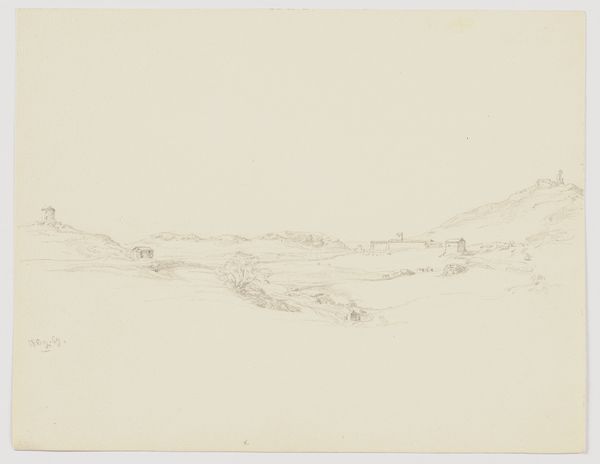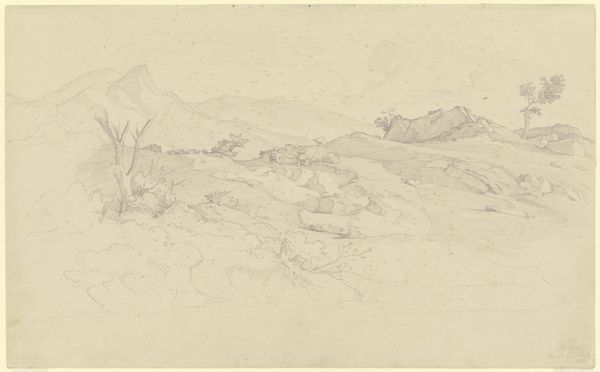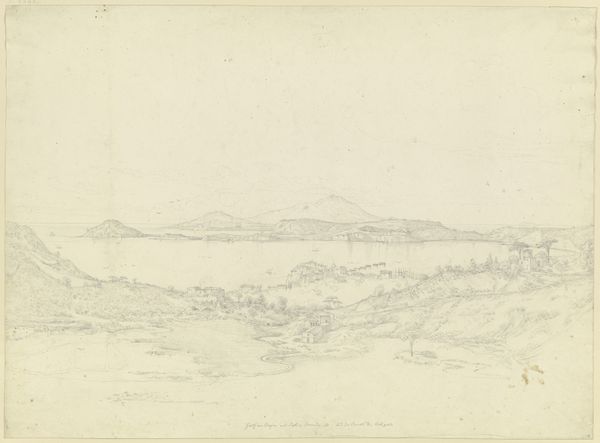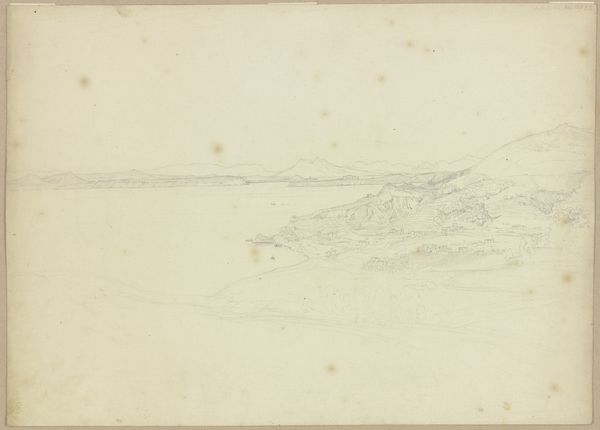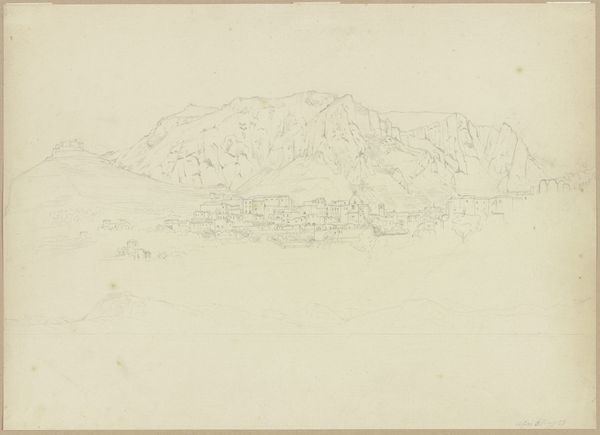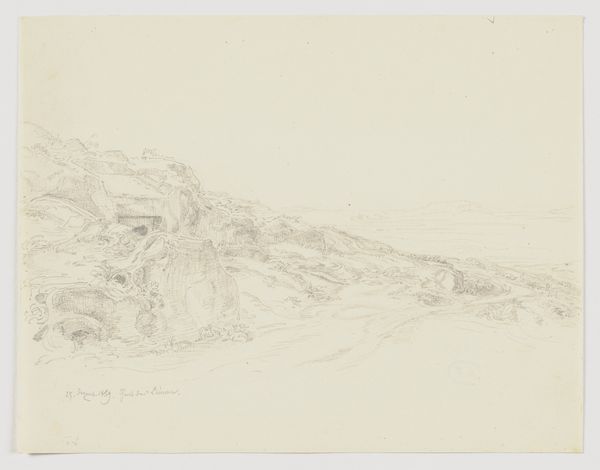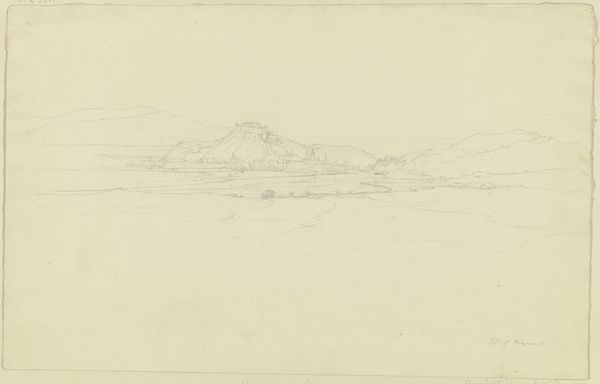
drawing, pencil
#
drawing
#
16_19th-century
#
landscape
#
personal sketchbook
#
romanticism
#
pencil
Copyright: Public Domain
Friedrich Metz produced this pencil drawing, ‘The Ruins of Auerburg near Audorf,’ sometime in the 19th century. The image presents a sweeping view of the German countryside punctuated by the ruined castle, a popular subject for artists in this period. The ruin as a Romantic motif invites reflection on the passage of time and the transience of human endeavor. But it also speaks to a specific historical moment in Germany. We can see these kinds of images as indexing a desire for national consolidation in the wake of the Napoleonic wars. Castles were a potent symbol of German history and the artistic representation of ruins played a role in shaping a shared cultural identity and collective memory. This was a period in which a lot of institutional frameworks - museums, art academies - were being formalized and that fed into the desire for nationhood. Art historical analysis, combined with social and institutional history, helps us to understand the cultural work performed by these kinds of images.
Comments
No comments
Be the first to comment and join the conversation on the ultimate creative platform.
